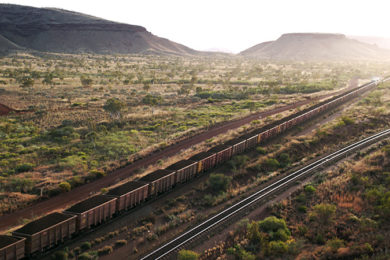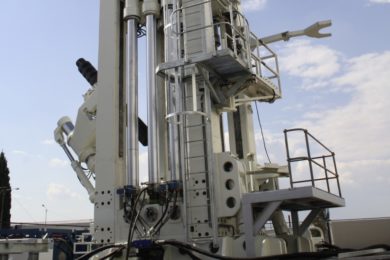Electrification and automation will be key priorities for mining companies in 2019, new research from Wood Mackenzie has claimed.
In reviewing the research firm’s ‘Global trends: what to look for in 2019’ report, Wood Mackenzie Research Director, Prakash Sharma, said: “Building a world-class low-cost mining business seems to be the mantra.
“Major players, such as BHP, Rio Tinto and Vale, are increasing the share of electricity and automation in mining operations. The objective is to not only reduce scope 1 emissions (from their own activities) and air pollution, but also to lower human involvement and operating expenditure.
“By employing data analytics, companies are chasing productivity and efficiency and lowering costs as a result. The aim is to stay at the lower end of the cost curve should demand for traditional mining commodities fall.”
In 2017, BHP set a long-term goal of achieving net-zero scope 1 and 2 emissions in the second half of this century, while, in 2018, Rio Tinto announced successful deployment of AutoHaulTM (pictured), “establishing the world’s largest robot and first automated heavy-haul long-distance rail network in the Pilbara region of Western Australia”, Sharma said.
“The key question will be whether other mining majors follow this trend in 2019.”
In terms of adopting automated technologies, BHP and Rio are far from being alone.
Vale’s Brucutu iron ore mine in Minas Gerais, Brazil, is set to go fully-autonomous this year – as a fleet of seven new Caterpillar 240 ton (218 t) 793F CMD fully autonomous trucks is expanded to 13 – Fortescue Metals is continuing its manual-to-automation fleet conversion at Christmas Creek, in Australia, and Norilsk Nickel recently told IM it was looking to introduce a “fully-automated mine”.
This is only the start.
NGEx Resources and Filo Mining, which are looking to develop open-pit copper operations in South America, confirmed in the past few months they were looking to incorporate autonomous haul truck technology from the off. These admissions came in their prefeasibility studies, which are likely to pre-date mining operations by three to five years.
And, underground, Resolute Mining and Sandvik plan to fully-automate the Syama block cave mine in Mali this year. The mine started commissioning at the back end of last year, hit the first production stopes in December and is expected to ramp up to steady-state output of over 300,000 oz/y by June.
This is but a handful of trials and projects going on in the automated mining space, with the process plant end also seeing a number of innovative trials or installations to move away from manual mode.
On the electrification question, specifically, Sharma told IM that grid-connected mines were acting faster when it came to adoption compared with those operating remotely. “Shovels and drilling machines at surface mines are already using electricity. Up to 100 t dump trucks are using electric-motors (battery-operated) at some mines in China,” he said.
“At underground mines, electric machines are increasingly used but batteries are yet to take off.”
The latter isn’t the case in Ontario, Canada, where Goldcorp (Borden) and Kirkland Lake Gold (Macassa) are using battery-powered equipment underground in their load and haul and utility fleets. In Sudbury, Canada, too there have been a number of deliveries of such machinery to some of its world-renowned base metal mines. (You can hear more about this at the inaugural Electric Mine conference in April).
As with the majority of technology projects, finance is the biggest hurdle for widespread adoption, according to Sharma.
“Another issue is around the financial health of the mining companies. Some are not willing to re-invest due to uncertainty around the commodities they mine. Some are focused on diversification of portfolios. There are others who want to act quickly, consolidate and take first mover advantage to decarbonise,” he said.
“We believe the electrification and automation in mining will continue to expand and tightening environmental policies will drive the shift. But a ‘one-size-fits-all’ approach will not work,” he concluded.










